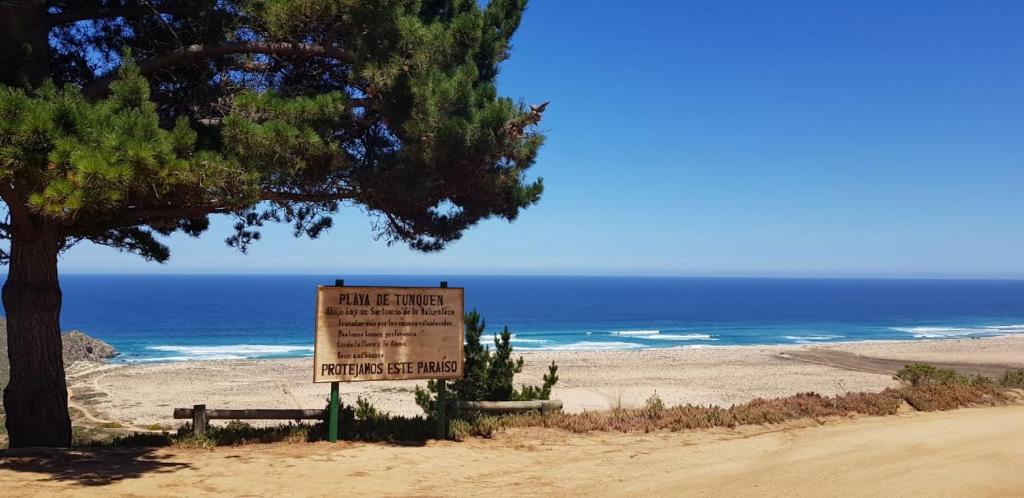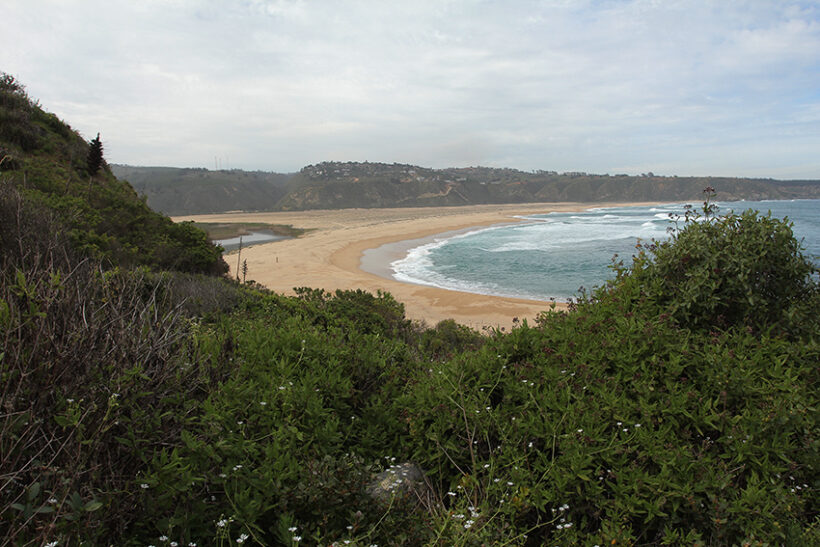The Ministry of Environment informed that it will promote the protection, as a Nature Sanctuary, of an area of 41.5 hectares.
This Sunday, July 24, the Chilean Ministry of Environment, through the SEREMI of Valparaiso, reported through publication in the newspaper El Mercurio de Valparaiso its decision to open the process of protection of the southern sector of the beach Tunquén, with the aim of declaring Nature Sanctuary.
Interested parties can make observations during the next 30 days at the SEREMI de Medio Ambiente de Valparaíso (Valparaíso Environment SEREMI).
The Ministry of the Environment will convene the Council of Ministers for Sustainability, who will have to make a decision on the declaration of the southern sector of Tunquén beach as a Nature Sanctuary.
If the declaration of the southern sector as a sanctuary is approved, it will be added to the existing nature sanctuary Playa de Tunquén-Quebrada Seca and the wetland sanctuary, which will
the entire 323-hectare polygon will be protected.

El Mercurio de Valparaíso
The importance of safeguarding the total coastal ecosystem and wetland
Tunquén, located between the municipalities of Algarrobo and Casablanca, is the last pristine ecosystem in the Valparaíso region that is threatened by real estate expansion.
The beach is 2 kilometres long, forming a coastal ecosystem made up of dunes, creeks and a wetland, which stores fresh water. The area is home to a rich biodiversity, with a high degree of endemism, helps in the mitigation and adaptation to climate change, contributes to the biological diversity of wild flora and fauna and migratory birds, all of which make up a natural heritage of important environmental value for the sustainable development of humans and our country.
The biodiversity of the site is part of the coastal biological corridor of America. It is home to 347 species of flora, 104 species of vertebrates (mammals, reptiles, fish and amphibians) and 72 species of native birds.
The importance of the wetland lies in the fact that it is a reservoir of fresh water, which is becoming increasingly scarce, and acts as a protective barrier against floods and tsunamis. The water supply made possible the early settlement of pre-Hispanic communities, which is recorded in the archaeological sites of the Batro, LloLleo and Polynesian cultures.
We have been working for more than twenty years to protect the Tunquén ecosystem. In 2202 our first proposal for a Nature Sanctuary was rejected by CONAMA (National Environment Corporation) before the creation of the Ministry of Environment.
In 2014 the Humedal de Tunquén Nature Sanctuary was approved with 107 hectares; in 2021 the Tunquén Beach and Dry Creek Sanctuary was added with 144 hectares.
The 42 hectares whose processing began today are pending for a “second stage”.
Sustainable Tunquén is possible!







